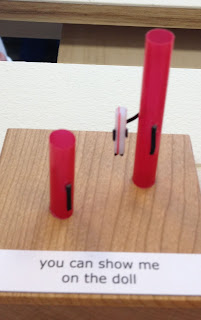ALFRED: Alfred University’s Symphonic Band is going to the
movies and hopes you’ll join them - Friday, Dec 6 at 8 pm.
 Dr.
Chris Foster, Director of Bands, said that students have been begging to play movie
themes for a while. This semester, he
decided it was time.
Dr.
Chris Foster, Director of Bands, said that students have been begging to play movie
themes for a while. This semester, he
decided it was time.
“I’m a
fan of a lot of block buster movies. Sci-fi and fantasy movies have great
stories and a lot of good music. When I started looking for a program, the plan
was to play one or two movie scores but there was just so much fantastic music
out there that we’re doing a total movie based concert.”
It’s
clear that Alfred’s students love movies and the music in movies but fun music
isn’t necessarily easy stuff.
One of
Foster’s favorites is The Dark Knight Rises, composed by Hans Zimmer and arranged
by Ralph Ford. Foster loves the dark cords, the power and energy that surges
through the piece. He urges people to listen for the percussion work in Dark
Knight.
Any
discussion of Dark Knight must include recognition of the clarinet section.
This piece is merciless for them. They have to dash madly but lightly for
measure after measure of finger-twisting sixteenth notes.
Another
Foster favorite is The Complete Harry Potter arranged by Jerry Brubaker but
with parts composed by John Williams, Patrick Doyle, Nicholas Hooper and
Alexander Desplat. There were 7 Harry Potter books crafted into 8 movies over
the years and this piece takes highlights from the many stories and composers
and smoothes them into one coherent piece.
As you
might expect, there are constant changes of style, tempo, keys and moods. Movie
music is often challenging but with 4 composers, it’s a bit more so.
Jon Ugalde
and Caroline Pikacs (both clarinetists) like the Hobbit: An Unexpected
Journey. Composed by Howard Shore, this
piece has five movements from the film.
Jon
likes it because it is technically challenging but fun and rewarding to play.
Caroline has come to appreciate the Hobbit because she just read the book in an
English class. She’d never read anything by Tolkien before and now plans to
read the Lord of the Rings series. She’s
had a glimpse of Tolkien’s world and thinks it’s a good place to spend time.
Caroline’s
favorite part of The Hobbit is the final movement – Dreaming of Bag End.
Melissa
MacDonald (trumpet) thinks that Symphonic Suite from Star Trek arranged by Jay
Bocook is the best. She proclaims herself to be a “giant Trekkie” and says that
the piece reaches into her proud, nerd core.
Should
you have any doubts, Melissa wants you to know that the piece “sounds pretty
damn awesome.”
Hunter
Haddad (saxophone) said that while it’s hard to pick a favorite, he invites you
to attend the concert to hear music from the picture Skyfall because it has a
great sax part.
In
Skyfall, themes in the upper winds answer those in the lower brass and then
others weave their parts between. It’s exciting music.
Hunter
also likes Star Trek. He played an arrangement of Star Trek in high school and
it’s always nice to play different versions of a familiar piece.
The
concert, says Hunter, will be awesome and unlike any other. Put it on your
calendar for Friday night, December 6 at 8 pm in the Miller Performing Arts
Center -MPAC.
If you
aren’t familiar with the Alfred Campus, don’t be shy. You are more than welcome.
Just enter Alfred University’s campus at the traffic light. Turn left at the
top of the hill. Drive until the road curves right. That building with all the
glass, at the curve, is your destination. Turn left to park.
Please
note: there is an informal dance concert in CD Smith Hall (also in MPAC) at 7
pm on that same night. The Symphonic Band program is scheduled for 8 pm to
allow people to see both performances. Both programs are free and open to all. For
more information contact the Division of Performing Arts at 607.871.2562.
Photo 1: Dr. Chris Foster
Photo 2: Melissa with Trumpet, John and Caroline with clarinets and Hunter with sax
(Elaine Hardman is honored to be a member of
the flute section of Alfred University’s Symphonic Band.)



























